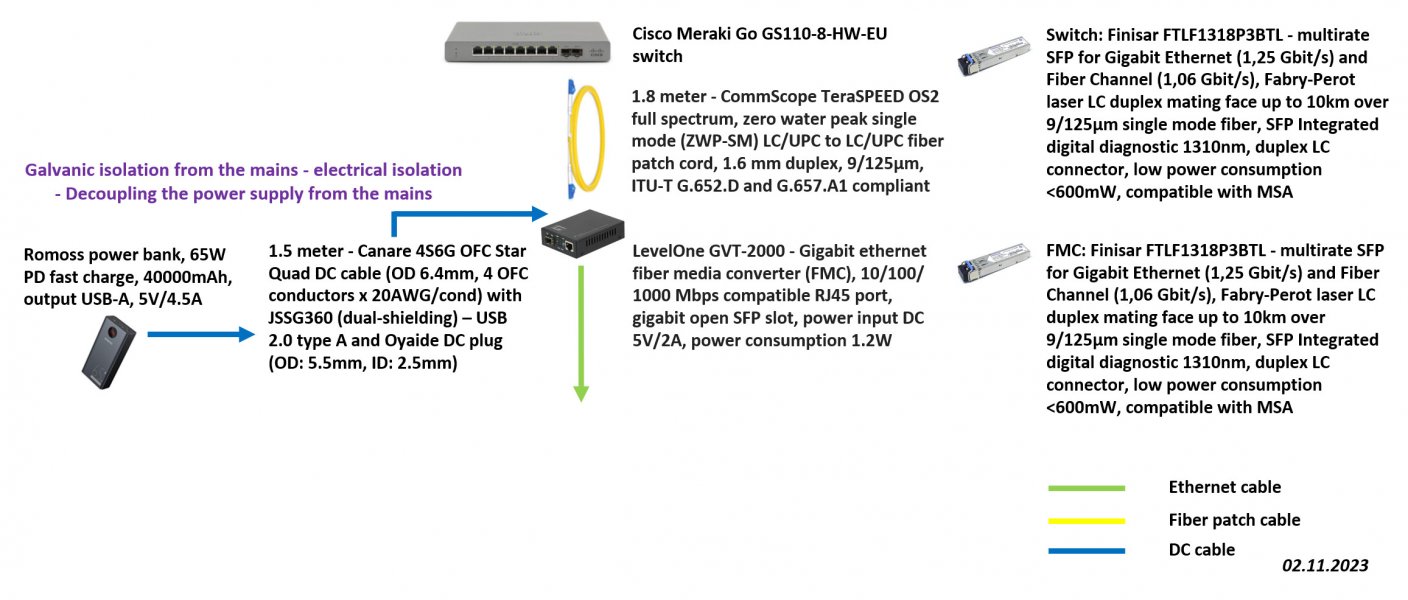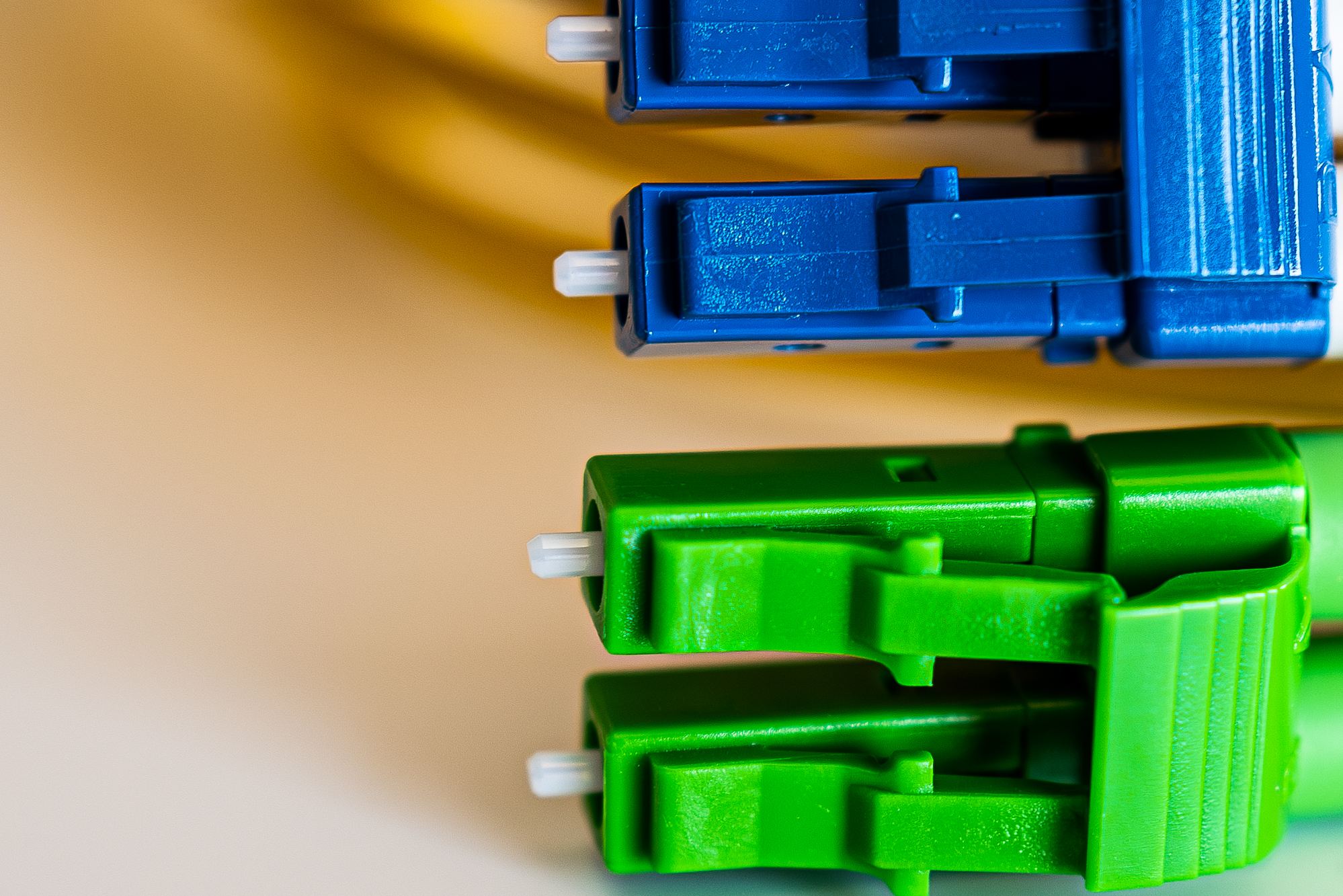TRHH brought
Grade B fiber optic cable to my attention. And Taiko Audio put me on a new track with their recommendation of the
DAC cable because of its low power consumption. I did some tests that may be of interest to others. I connected the cables directly between the Server (NAS and ROON) and the Audio PC (HQPlayer) for testing.
With fiber optic cable, the goal is to achieve the lowest insertion loss and the highest return loss. The best ones are designated Grade A. To my knowledge, only Grade B is available for purchase.
In the picture below, the round
UPC shape can be seen on the blue LC connector and the beveled
APC shape on the green LC connector.
Now the transceivers have to fit as well. The StarTech can only UPC, the Finisar SFP+ Optical Transceiver FTLX1475D3BTL UPC and APC.
For the test, I chose a piece of music I know well Kyrie by Mercedes Sosa. The spectrogram shows the good dynamics without Loudness War. When Mercedes Sosa's voice gains sharpness and the chorus smears as mush I know something is wrong.
I did two complete runs with each of the cables and also checked for any packet loss. To make a long story short, the evaluation looks the same for all three cables. No packet loss, no degradation in latencies, a jumbo packet at long intervals, and otherwise unremarkable traffic.
No changes from the sound either. I think with UPC Grade B you are very well served with both manufacturers FS and StarTech. The connectors seem to me to be a bit higher quality than the normal product. In the long-term test of APC Grade B, the Finisar transceivers unfortunately became very hot. There were drop outs, probably because of the chip throttling in the transceiver. I can therefore not recommend APC with the Finisar transceiver.
The next test concerns two cables:
10G SFP+ Direct Attach Kable (DAC) consists of a twinax copper cable terminated with SFP+ connectors at both ends. DAC cables can be divided into two categories: passive DACs and active DACs. Both passive and active DAC cables can transmit electrical signals directly over copper cables. The active DAC cables have electrical components inside the transceivers for signal amplification.
10G SFP+ Active Optical Cable (AOC) consists of a multimode fiber optic cable terminated with SFP+ connectors at both ends and requires external power to convert the electrical signals to optical signals and vice versa.
On the left is Cisco's AOC cable; on the right is FS's 10G SFP+ passive twinax copper direct attach cable (DAC).
As expected, there were no differences in terms of data transfer rates and packet loss. Not in terms of sound either. But the temperature development was interesting. The Finisar transceivers get hot even with UPC. In comparison, the AOC cable from Cisco only gets lukewarm. There is hardly any temperature development with the DAC cable from FS.
The approach of Taiko Audio with the recommendation of a DAC cable due to the very low power consumption has something. I could not determine EMI problems with me. But the DAC cable is also short (1m) and hangs in the air. Who is unsure takes an AOC cable with fiber optics. Both are much cheaper than the usual fiber optic transceiver solutions.






